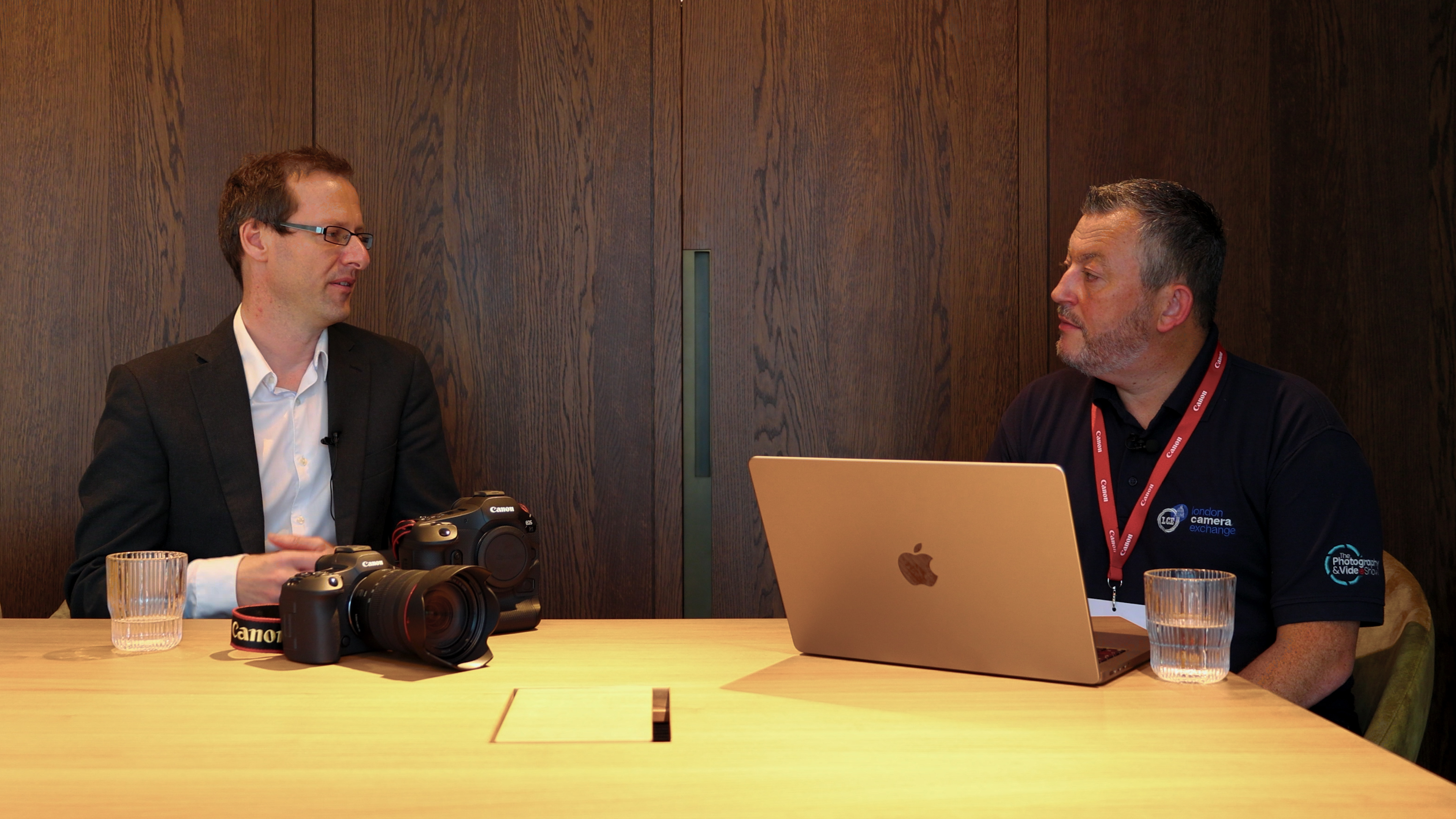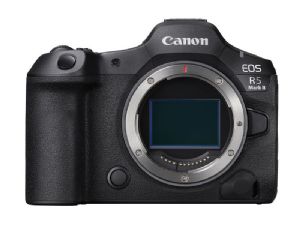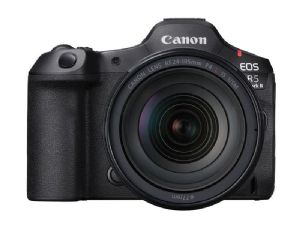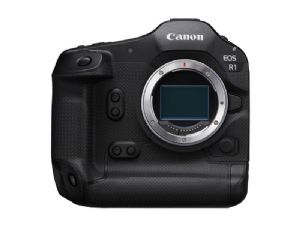
ITEMS £0.00
Browse by Brand
Atomos
Benro
Billingham
Binoculars and Telescopes
BlackRapid
Canon
Celestron
DJI Drones
DJI Osmo
Fujifilm GFX
Fujifilm X Series
Gitzo
GPO
Hahnel
Insta360
Joby
Lee Filters
Leica
Leica Sport Optics
Leofoto
LowePro
MagMod
Manfrotto
Maplin
Mindshift
NatureCams
Nikon
Olympus
Panasonic
Peak Design
Rode
Rotolight
Samyang
Sigma
Sony
Tamron
Tenba
thinkTANK
Vanguard
Zeiss Lenses
Zhiyun
Home / LiveView /
Canons Approach to User Feedback in New Product Development - An Interview With John Morris
Canon's approach to user feedback in new product development
An Interview with John Morris
Recently, our team journeyed to Munich to attend the launch event for the highly anticipated EOS R1 and EOS R5 Mark II cameras. During the event, Mark had the privilege of engaging in a conversation with John Morris, Canon’s Product Marketing Manager.

John: That's a great question. Over the past four years since we launched the R5, we've gathered extensive feedback from users. This has allowed us to refresh every aspect of the camera's performance. From speed and autofocus to image quality, we've integrated what our customers want in both the R5 and the R1.
For example, the R5 is designed to be an extremely versatile camera, appealing to a wide range of users. We’ve incorporated numerous performance improvements to enhance its versatility. On the other hand, the R1 is tailored for top-tier professionals in news and sports, where reliability and high performance are crucial. Yesterday’s hands-on experience highlighted its impressive durability and versatility, showing just how well it's constructed.
Mark: What kind of challenges did Canon face when creating the new R1, and how did you overcome them?
John: The expectations for a 1 Series are incredibly high because of its flagship status. It needs to perform flawlessly in any situation. One major challenge was pushing the autofocus beyond what is currently available in the R3 and the 1DX Mark III. We developed a new sensor that is back-illuminated and stacked, making it very fast. We also introduced the Accelerated Capture System with two processors: the Digic Accelerator and the Digic X. This system enhances subject recognition and tracking, even in complex scenarios. For the first time in the R series, we've included cross-type AF, providing both horizontal and vertical sensitivity for improved tracking and prediction in difficult sports and wildlife scenarios.
Mark: I experienced that yesterday under challenging lighting conditions. The R1’s accuracy and hit rate were incredible, even with fast-moving subjects.
John: Exactly. The R1 delivers 40 frames per second, with each frame in focus, even in erratic or low-contrast situations. Both the R1 and R5 are designed to provide reliable tracking at high frame rates. The cross-type AF is particularly effective when subjects are small or in low-contrast settings. There’s a lot of excitement and anticipation for these models because they highlight key innovations and new technologies. Hands-on experience will reveal the real power of these improvements.
Mark: Moving on to lens technology, can you discuss any recent advancements and how they relate to the new products?
John: There’s a lot of collaboration between the camera and lens through the RF mount, which enhances autofocus and image stabilization. Both new cameras offer eight and a half stops of IS, depending on the lens, with strong edge performance. We've also introduced new lenses, such as the dual fisheye lens for VR content creation and lightweight telephoto options like the 600mm and 800mm lenses. The new hybrid lens range, including the 24-105mm f2.8, offers a combination of compact size and high quality, suitable for both photo and video.
Mark: Today’s consumers are looking for faster cameras with reliable autofocus and high resolution. Can you explain the advancements in the new cameras?
John: Both the R1 and the R5 offer higher speeds, with the R1 reaching up to 40 frames per second and the R5 up to 30 frames per second. We've reduced rolling shutter distortion significantly. The autofocus system is crucial at these speeds, and we've included features like action priority mode, which helps the camera recognize and track the main subject in various sports. Both cameras have new stacked, back-illuminated sensors and incorporate deep learning technology for intelligent upscaling, achieving up to 96 megapixels for the R1 and 180 megapixels for the R5. This in-camera upscaling is a significant advantage, especially for sports photographers needing to send images quickly.
Mark: The ability to upscale in-camera is impressive, especially when immediate image delivery is required. How do the new cameras manage heat during intense use, like shooting in high temperatures?
John: Heat management is crucial due to the high-speed imaging platform. We've improved the internal structure to dissipate heat from critical components effectively. The R5, for instance, can shoot up to 8K at 60 frames per second. We also offer an optional cooling fan grip to enhance heat dissipation.
Mark: Thank you again for your time today, John. We appreciate the opportunity to test the new cameras and learn about these innovations. One thing I noticed about the R1 is its new mottled design. How did that come about?
John: We’ve considered every part of the camera's design to ensure it meets professional standards. The new structure is easier to grip, and the ergonomic design has been refined. The viewfinder is wider and more fog-resistant, and we’ve introduced a two-stage AF-ON button for better usability, even with gloves. Each button has been carefully designed for intuitive use.
Mark: Thank you, John, and the wider Canon team for this opportunity. We’re excited about the new products and look forward to seeing how they perform in the market.
Watch in full.

Canon EOS R5 Mark II Body
- 45MP Full-Frame Stacked CMOS Sensor
- DIGIC X & DIGIC Accelerator
- 8K60 Raw & 4K120 12-Bit Internal Video
- 180MP In-Camera Upscaling
- Sensor-Shift 5-Axis Image Stabilisation
- 30fps Continuous Burst Shooting
- Dual Pixel Intelligent AF
- Action Priority Mode for Sports
- Pre-Continuous Capture
- CFexpress & SD UHS-II Card Slots
£4,499.00

Canon EOS R5 Mark II with RF 24-105mm F4L IS USM Lens
- 45MP Full-Frame Stacked CMOS Sensor
- DIGIC X & DIGIC Accelerator
- 8K60 Raw & 4K120 12-Bit Internal Video
- 180MP In-Camera Upscaling
- Sensor-Shift 5-Axis Image Stabilisation
- 30fps Continuous Burst Shooting
- Dual Pixel Intelligent AF
- Action Priority Mode for Sports
- Pre-Continuous Capture
- CFexpress & SD UHS-II Card Slots
£5,749.00

Canon EOS R1 Body
FREE Goods Worth £448! - Lexar 256GB CFexpress GOLD Card + Lexar SL500 1TB Portable SSD + Canon LPE19 Battery - Offer Ends 26/6/25- 24.2MP Full-Frame Stacked CMOS Sensor
- DIGIC X & DIGIC Accelerator
- 6K60 RAW 12-Bit Internal Video
- 96MP In-Camera Upscaling
- Sensor-Shift 5-Axis Image Stabilisation
- 40fps Continuous Burst Shooting
- Dual Pixel Intelligent AF
- Action Priority Mode for Sports
- Pre-Continuous Capture
- Cross-Type AF
- Dual CFexpress Card Slots
£6,799.00




